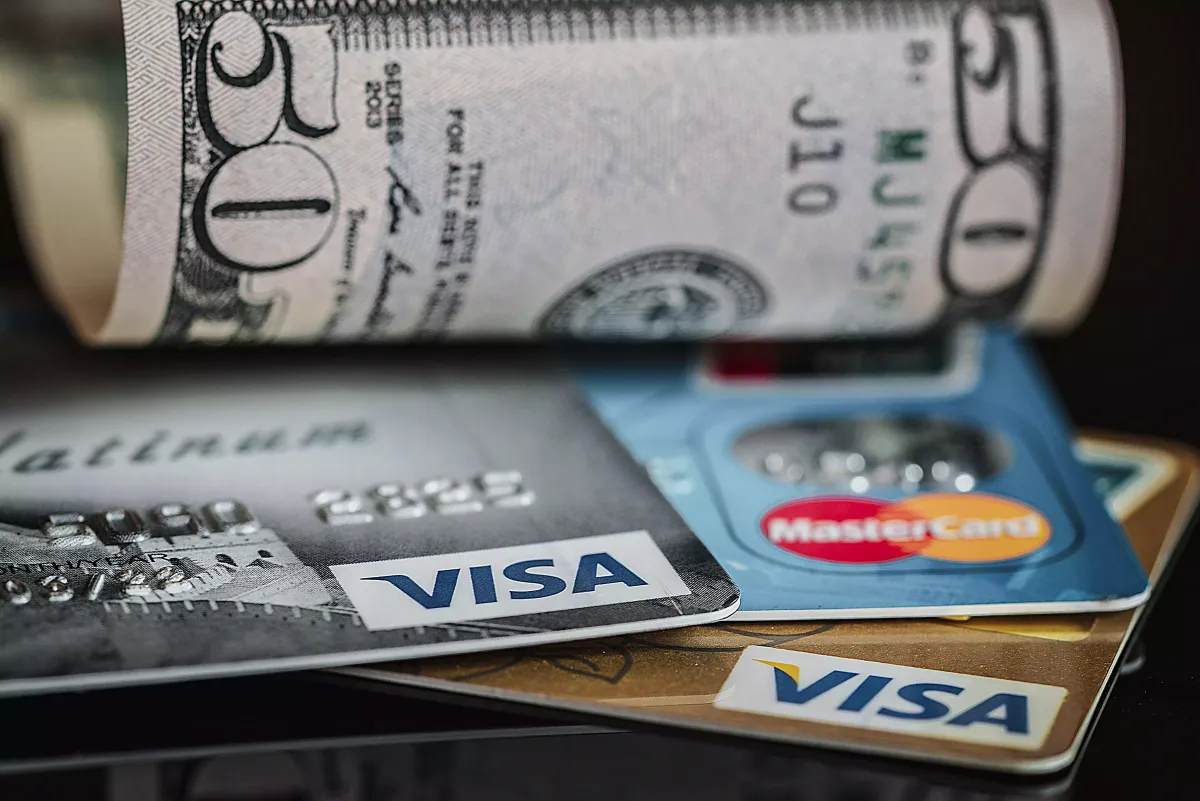Recommended Financial Products & Services
A list of financial products and services recommended by The Kermudgeon

Last Updated: 20 February 2024
Please read our disclaimer, especially our FTC Affiliate Disclaimer and Financial Advice Disclaimer.
This article is an introduction to some of the financial products and services I use, have used in the past, and/or am familiar with.
Aggregators & Budgeting Tools
Tiller Money (affiliate link)
Free for thirty days, then $79 per year, Tiller Money is a financial data aggregation and budgeting tool. This product is unique in that it feeds your bank, credit, and investment account data into spreadsheets, currently either Excel or Google Sheets. They offer a number of useful templates for various budgeting and planning scenarios, in addition to allowing you to modify theirs and/or to build your own! They also have an active community forum, in which other users and Tiller Money representatives discuss and share usage strategies and help each other solve minor issues.
Tiller Money is my personal favourite over YNAB, Personal Capital, and Mint. It’s great for getting a better handle on your cash flow in particular, but it’s also useful for just about any financial task you can think of, given that you can control how the spreadsheets are set up. I also found, unexpectedly, that using Tiller Money allowed me to better exploit various credit-card and bank offers: account opening bonuses, rebates, “5% back this month on petrol,” etc. By having all the transaction information readily available, I am able to see the bigger view: what do I owe total this month, vs. at some point in the future. This is especially helpful if I’m exploiting multiple 0% introductory rates. The budgeting functionality also helps me keep track of the overall picture by year, or over multiple years, which allows me to more easily do things like pay a phone bill or rent for three months ahead to take advantage of a discount, while still tracking cash flow and budget overages by year, instead of only for the current month.
Empower (formerly Personal Capital) (affiliate link)
Personal Capital is a free account aggregation tool which allows you to view all your accounts—bank, credit, investment, etc.—in one app or website. It’s good for net worth and cash flow visualisation/management, strong on investment allocation views, and gives investment suggestions based on the goals you enter. It has some budgeting tools, but is weaker than some alternative sites.
YNAB (You Need a Budget)
YNAB is free for thirty-four days, after which it costs $99 per year. It is a budgeting tool with a focus on helping people who are new to budgeting/cash flow and would like to get a better handle on their finances. I tried it out briefly before finding another tool which met my needs better; but I know several people who swear by this tool.
Banking & Investment Accounts
I believe in having at least two vendors for any service that really matters. If something goes wrong with one, you can use the other.
Discover Bank
Discover Bank offers free checking, savings, and other deposit accounts. Their interest rates are not the highest, but they are generally above average. Discover is fairly no-frills compares to some banks, but they are also somewhat more conservative in their operations, and customer service quality rivals that of American Express. Based 100% in the U.S., you almost always get a representative who knows what s/he is doing and who speaks intelligibly. In my experience, minor problems have always been handled promptly and fees waived as appropriate.
I like their savings account, which offers instant transfers to checking as needed. They also offer overdraft linked to savings (only: no overdraft line of credit is offered). Their website is among the best-organised of any similar site, and their mobile app is of similar quality.
Note: As of 20 February 2024, a merger with Capital One is pending. Depending on how this goes, it may make Discover a bank we no longer recommend.
Fidelity Investments
Fidelity Investments is, in my view, the overall best choice for basic stock/bond and ETF investing. (For mutual funds, I prefer Vanguard, but Fidelity has no minimums, and it’s possible to hold Vanguard ETFs within a Fidelity account.) Unless you are an advanced investor with specific needs not supported by Fidelity, you will be able to achieve what you need to. If one-stop shopping is your thing, you can also use their cash management account as a checking account and use their credit card, issued by Elan.
Charles Schwab
In my test run, Schwab seems decent, and they sometimes have good account-transfer bonuses. While some friends and colleagues swear by Schwab, I personally prefer Fidelity overall.
Chase Bank (affiliate link)
I originally opened a Chase checking account to take advantage of an account-opening bonus. I kept them because they have physical branches in the majority of states, and they offer referral bonuses. They also waive fees with direct deposit of $500 per month, so it’s relatively easy to keep this account free. Among larger nationwide banks that has actual physical locations, Chase is the only one I would consider, based on my experience with how they tend to handle problems, compared to their competitors.
That said, U.S. Bank has great reviews both in general and from friends. I’ve had an account there only for the bonus money, not many actual transactions. Key seems to be a close third.
Other than for the odd account-opening bonus, I would avoid Huntington, Fifth Third, and PNC like the plague. They have horrible web sites, in some respects barely functional; PNC has high fees and a tendency to repeat mistakes.
Credit Cards
I’m in favour of having at least three credit cards; more, if you can. At last count, I have sixteen.
Why?
Having multiple cards allows you to take better advantage of various cash-back and bonus programs and ensures you have a card to use if one is declined or lost. Also, rotating which cards you use encourages the companies to give you better offers, such as 0% balance transfer/purchase offers for low or no fees, more often. Played well, that game can earn you money. Played half-well, that game can at least save you on some interest if you’ve already racked up some debt you can’t pay all at once. You can also use available credit as a last-ditch emergency fund, if you have lost a job or in any situation where you don’t have ready cash on hand to cover an unexpected emergency.
American Express (affiliate link)
I like their Blue Cash Preferred (affiliate link) card, which offers 6% back on groceries up to a $6,000 annual spending cap. It offers 6%, no cap, on streaming services, and 3%, no cap, on purchases at gas stations, transportation---including public transit, rideshares, parking, tolls. etc.) This card has a $95 annual fee, but can be worth it depending on your spending patterns. If your spending does not make this card worthwhile, consider the Blue Cash Everyday (affiliate link) card, which offers 3% back on groceries up to $6000 and 2% at gas stations.
In addition to cash back, American Express is known for excellent customer service. It is easy to transfer credit limits among multiple cards as needed. Another differentiating factor is that Amex offers the ability to have additional cardholders with controllable spending limits and instant freeze/unfreeze ability. This is useful for building credit for the additional cardholder, for example if that person has poor credit compared to the account owner. It is especially useful to begin building credit for a minor or adult child. Purchases made by the additional cardholder are payable by the account owner, but payments made on time are also reported on the additional cardholder’s credit report! Missed payments and other negative reporting does not affect the additional cardholder, because s/he has no legal obligation to pay.
Capital One
Great company for those starting out, or with poor credit. Some of their cards offer 1.5% back on everything, which is not great but is better than nothing. I like their World MasterCard and Quicksilver (affiliate link) products. Both come with no foreign transaction fees, so you don’t pay more for those odd purchases in Euros, Pounds, or Yen. The main downside to Capital One is that they are slowwer to increase credit limits compared to most other issuers.
Chase
The Chase Amazon Prime Rewards Visa Signature Card is good if you are an Amazon Prime member. You get 5% back on all Amazon.com and Whole Foods purchases. Otherwise, a useless card. The Chase Freedom (affiliate link) cards are also decent options, offering 5%, 3%, 1.5%, or 1% cash back depending on the type of purchase.
Citi
Citi’s Double Cash MasterCard is interesting. It pays 1% back when you make a purchase, and another 1% back when you pay it off. It has no minimum redemption amount, which means you will get your money back faster than most of the other 2%+ cashback cards. I often bounce between this card and Elan (below) for all spending except groceries (Amex Blue Preferred) and Amazon.com (Chase Amazon).
Discover
I like their “Discover it” products, just for the 5% back they offer on rotating categories. In the past, I was never one to chase these types of offers, but now that we can carry virtual cards using our smartphones and track purchases using tools like Tiller Money, it’s simple. They offer Discover it (affiliate link) and Discover it Chrome, each with different cash back rules.
Fidelity VISA (Elan)
This is a Fidelity-branded card which offers 2% cash back if redeemed in quantities of 2,500 or more, into a Fidelity account. Even if you don’t already have a Fidelity account, this is worth the effort if you can’t get the Citi Double Cash card. Their customer service and fraud department also tend to be superior to Citi’s.
Other
Plastiq (affiliate link)
Plastiq allows you to pay bills with a credit card, even if the payee does not accept credit cards. The catch is that they charge you, not the payee, the usual interchange fees, which is typically about 2.85%, with occasional promotions. If your cashback card earns you 2%, you are obviously still paying 0.85%; but if you find a card paying 2.85% or greater, it’s a break-even or winning proposition. Regardless, I find this tool more useful for cashflow, because it can be used to pay for things like rent, home repairs, etc., thus pushing the due date for the expenditure into the future by 30 days or more. Plastiq is also useful if you have a 0% introductory offer on purchases, which means you can delay paying rent by as much as 12 to 18 months, investing the difference meanwhile.
Conclusion
Hopefully, you found some tidbit in this article which you can either use directly in your situation, or which at least gets you thinking about the topic!



 Support Us
Support Us
Comments ()